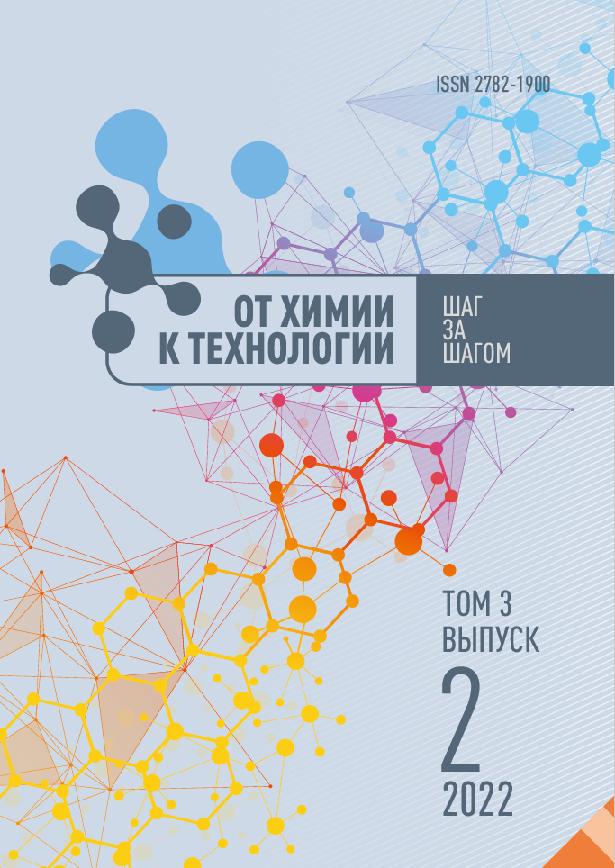Yaroslavl, Yaroslavl, Russian Federation
Yaroslavl, Yaroslavl, Russian Federation
UDC 669
The paper provides the need and economic efficiency of recycling metallised fabrics lost their functional properties. We selected the recycling options to ensure the total recovery of the fabrics containing metallic and polyamide yarns. We proposed the electrochemical technology involving cathodic separation of recyclable metals in the form of coatings firmly adhered to the surface of the cathode as the main method of metal threads recycling. By the experiments, there is a degradation of polyamide yarns and subsequently nitration in nitric acid as a result of preliminary operations before the electrolysis. Also we proposed a method for the utilisation of the resulting nitrated polyamide degradation products, providing them as oligomers for general purpose rubber compounds. The results agree with the possibility of obtaining a brilliant silver cathode precipitate strongly adherent to the surface of the cathode made of the nitroxide electrolyte. Obtained kinetic rules of electrochemical process of cathodic deposition of recycled metals indicate the presence of significant polarization at the initial moment of time during the discharge process of silver and copper cations.
metallised fabric, electrochemical technology, copper and silver cathodic coating, nitrided polyamide degradation products, oligomers, rubber compounds, electrochemical kinetics
1. Sukhorukova, I.V., Sheveiko, A.N., Kiryukhantsev-Korneev, F.V. & Shtansky D.V. (2015) Effect of composition and surface roughness of TiCaPCON-Ag coatings on silver yield kinetics in physiological solution. Izv. vuzov. Poroshkovaya metallurgiya i funkcional'nye pokrytiya, 3, pp. 53-61 [online]. Available at: https://doi.org/10.17073/1997-308X-2015-3-53-61 (in Russian).
2. Pavlov, A.V., Podvalnaya, Yu.V. & Efimova, T.N. (2018) Production of multilayer rubber fabric plate for protection against hard radiation. Promyshlennoe proizvodstvo i ispol'zovanie elastomerov. Informacionnyj sbornik, 4, pp. 18-22 [online]. Available at: https://doi.org/10.24411/2071-8268-2018-10404 (in Russian).
3. Sakhabieva, E.V., Ivanova, S.N., Davletbaev, I.G., Luchkin, G.S., Nizameev, I.R., Voronina, L.V. & Kadysheva E.Yu. (2013) Metallized textile materials for medical clothing with high electrostatic properties. Vestnik Kazanskogo tekhnologicheskogo universiteta,16(22), pp.153-155 (in Russian).
4. Order of the Ministry of Sport of Russia of 08.08.2016 No. 944 "Rules for the sport of fencing" (in Russian).
5. Pavlov, A.V. (2021) On the causes of wear and tear of fencing equipment. Tendencii razvitiya nauki i obrazovaniya, 75(4), pp.111-114. DOI:https://doi.org/10.18411/Ij-07-2021 (in Russian).
6. Report on the activities of the Russian Fencing Federation for the year 2021 [online]. Available at: https://www.audit-it.ru/buh_otchet/7704112610_obshcherossiyskaya-sportivnaya-obshchestvennaya-organizatsiya-federatsiya-fekhtovaniya-rossii (in Russian).
7. Safonov, P.E. & Levakova N.M. (2017) Development of structures and technology of heat-resistant radio-reflective fabrics for space antennas. Vestnik SibSAU, 18(1), pp. 219-226 (in Russian).
8. Bersirova, O.L., Byk, S.V. & Kublanovsky, V.S. (2013) Silver electrodeposition. Kiev: MIC MEDINFORM (in Russian).
9. Maksimova, V.V. & Loginova, A.Yu. (2013) Review of the main chemical methods of extraction in copper hydrometallurgy. Prioritetnye nauchnye napravleniya: ot teorii k praktike, 7 [online]. Available at: https://cyberleninka.ru/article/n/-osnovnyh-himicheskih-metodov-izvlecheniya-v-gidromettaurgii-medi (in Russian).
10. National Library of Medicine [online]. Available at: https://pubchem.ncbi.nlm.nih.gov/compound/N-6-Aminohexanoyl-6-aminohexanoate.
11. Grigorenko, V.G., Rubtsova, M.Yu., Uporov, I.V., Ishtubaev, I.V., Andreeva, I.P., Scherbinin, D.S., Veselovskiy, A.V. & Egorov A.M. (2017) Bacterial serine beta-lactamases TEM type: structure and mutation analysis. Biomedicinskaya himiya, 63(6), pp. 499-507. DOI:https://doi.org/10.18097/PBMC20176306499 (in Russian).
12. Yasuyuki, Kawashima, Taku, Oki, Naoki, Shibata, Yoshiki, Higuchi, Yoshiaki, Wakitani, Yusuke, Matsuura, Yusuke, Nakata, Masahiro, Takeo, Daichiro, Kato & Seiji Negoro. (2009) Molecular design of an enzyme decomposing nylon-6 byproduct from carboxyesterase with beta-lactamase fold. FEBS Magazine, 276(9), pp. 2547-2556. DOIhttps://doi.org/10.1111/j.1742-4658.2009.06978.x.
13. Tikhomirov, L.A. (2019) Study of interaction of polyamide-6 with butadiene-nitrile rubber. Kauchuk i rezina, 78(6), pp. 368-371 (in Russian).
14. Pavlov, A.V. & Solovyov, V.V. (2021) Characteristics of extraction of fruits of Sosnovosky's hogweed. From Chemistry Towards Technology Step-By-Step, 2(2), pp. 81-88 [online]. Available at: http://chemintech.ru/index.php/tor/2021-2-2. DOIhttps://doi.org/10.52957/27821900_2021_02_81 (in Russian).
15. Kotukhova, G.P., Anisimova, N.N., Shestakova, R.D., Ter-Oganesyan, A.K. & Khabirova, E.K. (2005) Method of production of refined silver. Zapiski Gornogo instituta. Promyshlennye biotekhnologii, 165, pp. 107 109 (in Russian).
16. Patrushev, V.V. & Bulganina, L.P. (2006) Extraction of base metals in refining of platinum metals. Fundamental'nye issledovaniya, 7, pp. 25-25 [online]. Available at: https://fundamental-research.ru/ru/article/view?id=5166 (in Russian).
17. Kotik, F.I. (1978) Accelerated control of electrolytes, solutions and melts: Reference book. M.: Mashinostroenie (in Russian).







